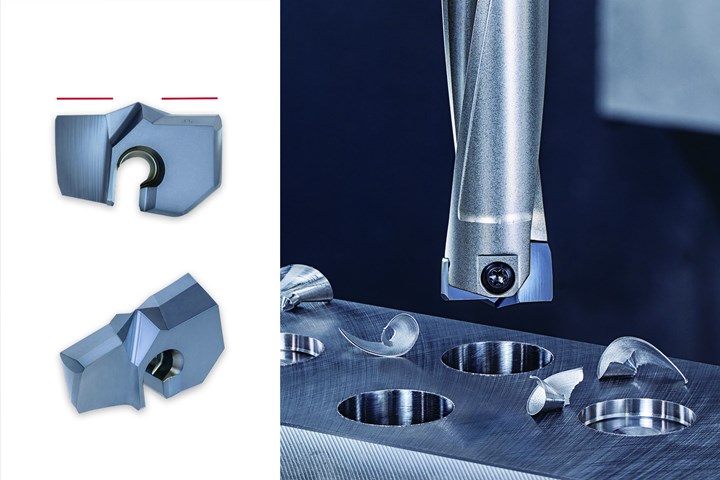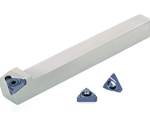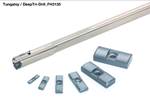DrillForce-Meister Tackles Large Diameter Flat Bottom Hole Drilling
Tungaloy’s exchangeable head drill series adds SMF-style flat head drill tips for more efficient holemaking ranging from 20.0 mm to 40.0 mm in diameter.

Photo Credit: Tungaloy
Tungaloy has expanded its DrillForce-Meister exchangeable head drill series by adding SMF-style flat head drill tips, which tackle large diameter counterboring challenges, and is suitable for parts and materials found in a wide range of industries.
The SMF-style flat head drill tips are designed to efficiently open large diameter holes ranging from 20.0 mm to 40.0 mm (0.787″ – 1.575″) at a lower cost. Further, the exchangeable drill tip feature eliminates the need for regrinding and recoating—as is the case with solid carbide drills—and reduces the amount of tool float inventory kept to avoid machine downtime, minimizing the overall cost per hole in high-volume production lines. Drill dimensional stability and tool life predictability are guaranteed.
Further, DrillForce-Meister’s featured clamping design securely retains the drill tip in place with the clamping screw and supports the tip with large contact surfaces between the drill tip and body, enabling reliable holemaking operations, while allowing quick and easy tool changes.
For customers seeking to improve productivity in flat bottom hole processes, DrillForce-Meister introduces three versions of the SMF flat head drill tips, including the SMF200, SMF300 and SMF400.
According to Tungaloy, the SMF drill tip can create flat bottom holes, enabling one-step counterboring without requiring a start hole or end milling processes. The SMF’s cutting-edge form allows easy penetration into the material with inclined or irregular surfaces, while improving the precision and minimizing the shifting of the hole position. The drill diameters are available in a range from 20.0 mm to 40.0 mm (from 0.787″ to 1.575″). The drill tips are also available in the AH9130 grade for holemaking applications with exceptional wear resistance in various materials.
Related Content
-
How to Eliminate Chatter
Here are techniques commonly used to combat chatter and guidelines to establish a foundation for optimizing the moldmaking process.
-
The Ins and Outs of Hot Runner Temperature Control
A training checklist that explains the why and how of proper hot runner temperature control and system management.
-
Laser Welding Versus Micro Welding
The latest battle in finely detailed restoration/repair of mold materials.















